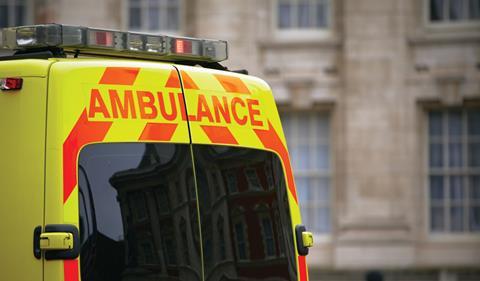A&E will always be many people’s first port of call for care, and working with this reality would allow the NHS to relieve overloaded emergency capacity by directing visitors to suitably ‘marketed’ services, says Ian Mills

Ambulance
We are all aware of capacity problems facing accident and emergency departments. Monitor warned in September that the number of foundation trusts failing to meet the target for seeing patients within four hours has doubled in the last year.
‘Linked closely to the NHS brand − and building upon it − is another immensely powerful brand: A&E
Much has been written as to why this is happening but one issue that has never been fully articulated is the extent to which A&E is a social marketing problem.
Commercial and social marketing is all about trying to get us to change or reinforce behaviour. Even though we are surrounded by brands, branding is a process that is often misunderstood.
Brand NHS
When asking people “What is a brand?” one is met with a variety of answers from simply “a name” to more complex concepts such as “an aspiration”. By far the most powerful definition is “it’s a promise”.
All brands have a unique “proposition” or offer and the promise is to consistently deliver that brand proposition. The stronger the proposition, the more powerful the promise and the stronger the brand is.
It can be a single proposition such as those offered by Mercedes, BMW or Audi; each offers a unique promise but all build upon the proposition of “German engineering”.
The NHS is in the enviable position of possessing one of the strongest brands in the UK. It has everything a marketing guru desires from a brand, including high awareness of its name and logo, as well as a visual identity.
Building strength
The greatest strength of the NHS lies in its proposition. For most of us it is: “To cure illness and to help us get well.”
It carries the additional propositions of “ease of access” and “free at the point of use”.
Another one it would like to have, but has not fully attained, is “to keep us healthy”.
These propositions reinforce the sense of trust that lies in a strong brand. It also explains the public revulsion and confusion when care scandals occur, which go against everything we feel the NHS stands for.
Linked closely to the NHS brand − and building upon it − is another immensely powerful brand: A&E.
Alternative national treasure
As with the NHS brand, A&E is also ingrained into the national psyche. Work undertaken by SMSR in emergency departments and walk-in centres confirms that A&E also has several strongly held propositions, depending on the user’s circumstances. In an emergency scenario, A&E offers 24/7 access to quality healthcare.
‘For most people faced with what they call an emergency, being rational is not part of the service selection decision making process’
In a non-emergency scenario it offers several propositions: it is an alternative route into the NHS when, for whatever reason, access via a GP is not possible (usually due to the difficulty of making an appointment). Users can also associate it with access to healthcare when out of hours. They can see it as a mechanism to bypass the queue generated by going through the normal primary care route to such services as x-ray. It provides access to the NHS when not registered with a GP.
The A&E brand comes to the fore when a person has to deal with an “emergency” as defined by the individual and not the NHS.
For most people faced with what they call an emergency, being rational is not part of the service selection decision making process; instead they move into automatic selection mode and the strongly held perception that A&E is the right course of action comes to the fore.
Any reorganisation that attempts to work against these deeply held perceptions of A&E does so at its peril.
Misguided alternatives
In the current debate about how to deal with the A&E overload, there is much debate about providing alternatives. While such services are eminently sensible and viable, they ignore one very important issue: the power of A&E brand propositions.
‘You will never stop people going to A&E. It should be a front door through which everyone enters and is welcomed’
Health planners and politicians should accept that because of the strength of the A&E brand, it is pointless offering alternatives, no matter how good or rational they are.
This is why processes such as walk-in centres and out of hours, while being sensible alternatives, do not solve the A&E problem. As secondary brands they are much weaker and their promise is less powerful.
So what is the solution? Rather than offer alternatives to A&E, these secondary brands need to become an integral part of emergency care, building upon the strength of the A&E brand promise. They need to become sub-brands of A&E rather than portrayed as alternatives.
You will never stop people going to A&E. It should be a front door through which everyone enters and is welcomed.
Entry through this front door should not automatically guarantee access to accident and emergency services though. Rather, behind the door should be an effective assessment procedure that, depending on the patient’s circumstances, would direct them to a range of alternative A&E services, especially during the daytime.
Emergency access
The only direct access into A&E treatment should be for two specific groups: blue light patients (sometimes coming in via the back door); and persons meeting certain previously agreed emergency criteria.
Everyone else would be directed to other services such as walk-in centres, asked to use out of hours or directed to other facilities such as their local health centre. These, however, must be seen as part of A&E and not alternatives.
This is not the only solution to the A&E crisis but it could help to overcome current difficulties.
Ian Mills is director of SMSR and is a visiting lecturer in marketing at Hull University Business School



























4 Readers' comments